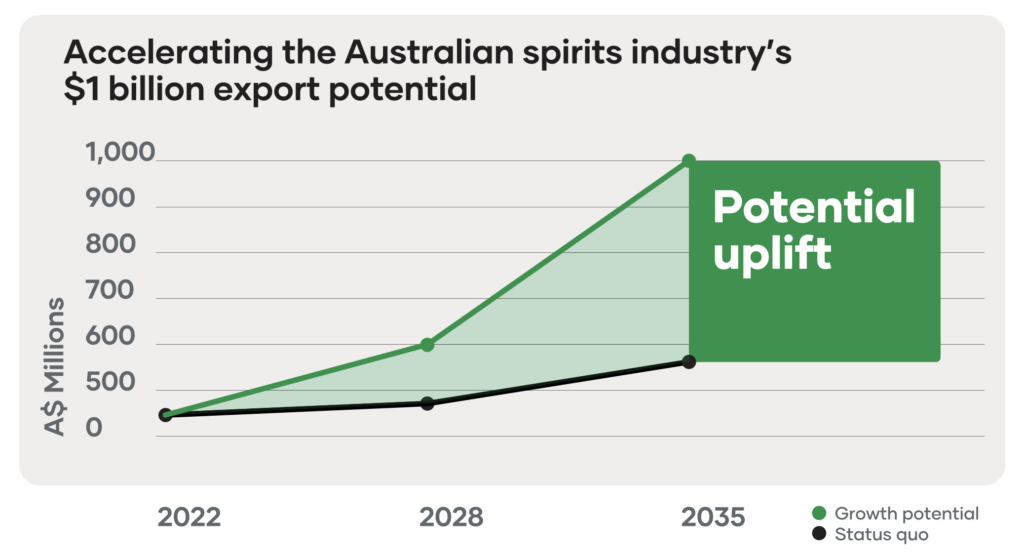Australia’s spirits industry has the potential to be a $1 billion export powerhouse, according to modelling by economics firm Mandala. The study found that Australia is ideally positioned to capitalise on rising global demand for high quality, premium spirits.
Mandala’s Spirits Industry Competitiveness Plan (2024) found that Australia has many of the trade advantages required for a country to become a major spirits exporter, including access and connections to growing markets, local industry development and complementary industries.
If Australia addressed the barriers currently constraining its potential – like the high rate of excise, inadequate trade support and conditions, and international awareness of Australian spirits – exports could be 79% higher than if there were not any policy interventions, translating to an additional $111 million in economic activity and more than 878 full-time jobs.
Exporting at its full trade potential and performing as efficiently as the United Kingdom, France, Ireland and Mexico, Australia could accelerate its export growth trajectory to reach $1 billion of spirits exports annually.

The trade advantages identified by Mandala bolster an already compelling case for Australia to become a major spirits exporter, given our intrinsic production advantages in comparison to other nations.
Global companies that have invested in enhancing their manufacturing capabilities in Australia may also benefit from leveraging these credentials to establish their Australian operations as a base from which to distribute to the broader Asia-Pacific region.
Just 17 per cent of Australian spirits manufacturers currently export their products (Deloitte, 2024) and the vast majority of Australia’s total $112 million export revenue is concentrated among a handful of leading domestic brands (Mandala, 2024). However, 40 per cent have indicated they would export, with the right support.
Regardless of scale, distillers all report similar challenges associated with succeeding in export overseas. While some have tried to leverage the exposure from award wins in major spirits competitions, awareness of these accolades is concentrated among industry insiders and spirits aficionados.
As such, aspiring exporters are entering markets from a standing start. Their prospective customers may be minimally aware of Australia – let alone its credentials as a spirits producing nation. This makes the task of marketing their brand and products much more complicated than for competitors who are standing on the shoulders of a strong country brand.
A coordinated approach and investment from the Federal Government can leverage Australia’s quality credentials to accelerate the growth of Australian spirits exports to reach $1 billion.
